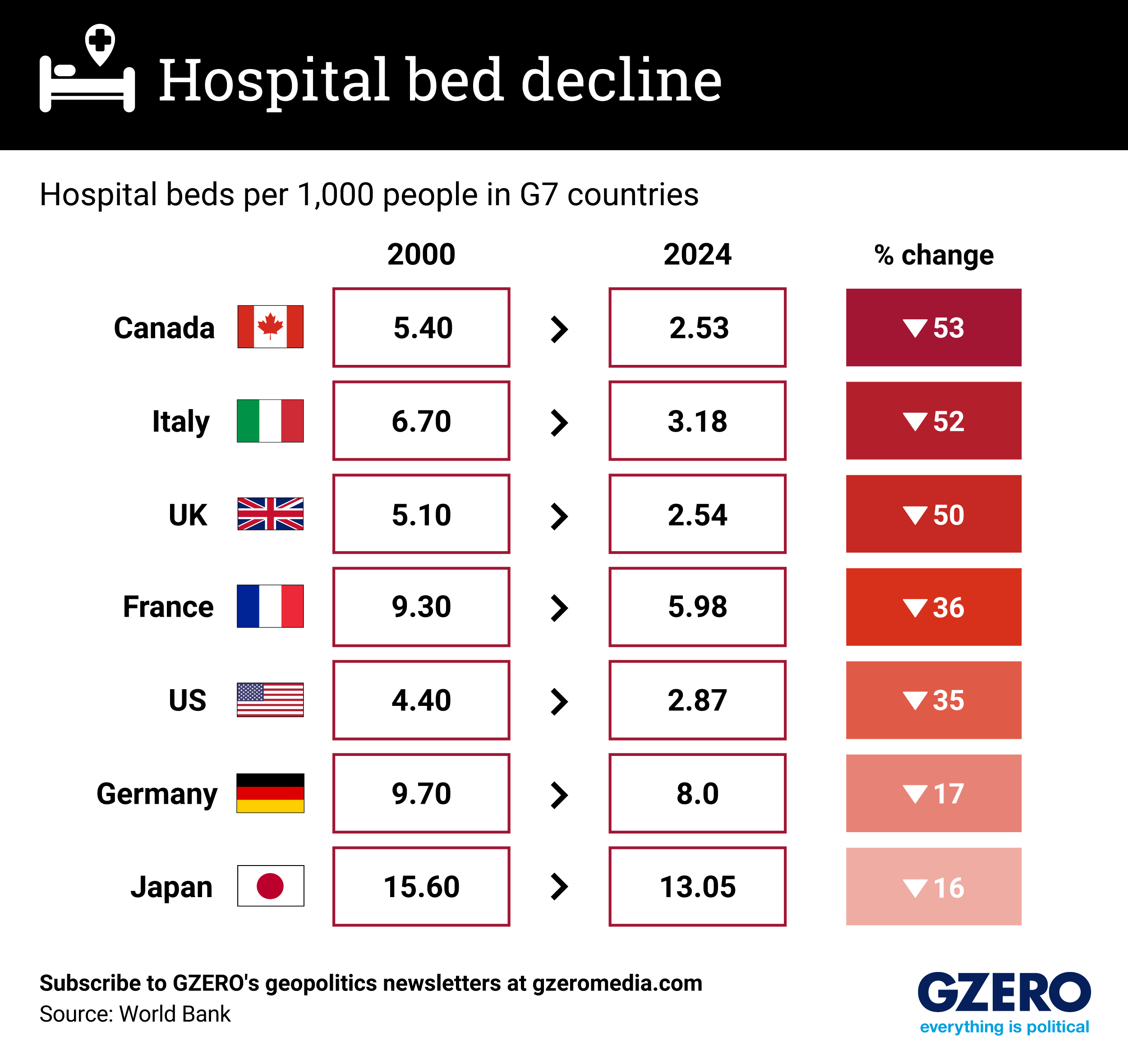June 27, 2024
They made their bed – and were forced to lie in it.
At the start of the pandemic, G7 countries were plagued by a huge uptick in hospital admissions – and the shocking reality that hospital beds had been on a 50-year decline. Four years later, these countries have still not reversed the downward spiral.
In the US, over the last five decades, care has shifted away from inpatient hospital settings and to outpatient services to cut costs. The decrease has also been intentional. In 1974, the government began an initiative to directly cut the number of hospital beds, believing in a rule calledRoemer's Law, which said that “a hospital bed built would be a hospital bed filled,” thus driving up costs.
However, the US’s free-market healthcare system still provides more hospital beds per capita than the government-dominated system in Canada. According to the Canadian Institute for Health Information, Ontario has just one intensive-care bed for every 800 residents, giving it no surge capacity. Michael Decter, the former chair of the Health Council of Canada told theCBC that because Canada’s system is public, “we tend to ration everything.”
Across the G7, governments have reduced hospital capacity to cut costs and because advances in medical care have decreased the amount of time patients spend in hospitals. However, older people – who are more likely to spend time in hospital – are also taking up an increasing share of G7 populations. The result is higher wait times, lower surge capacity, and worsening patient care.
More For You
America’s new National Security Strategy confirms what Europeans have feared for months: Washington now sees a strong, unified European Union as a problem to be solved, not an ally to be supported.
Most Popular
Sponsored posts
The power of sports
What's Good Wednesdays
What’s Good Wednesdays™, December 10, 2025
Walmart sponsored posts
Walmart's $350 billion commitment to American jobs
In this episode of Tools and Weapons, Microsoft Vice Chair and President Brad Smith sits down with Ed Policy, President and CEO of the Green Bay Packers, to discuss how purpose-driven leadership and innovation are shaping the future of one of the world’s most iconic sports franchises. Ed shares how technology and community-focused initiatives, from Titletown Tech to health and safety innovations on the field, are transforming not just the game of football, but the economy and culture of Green Bay itself. He explains how combining strategic vision with investment in local startups is keeping talent in the Midwest and creating opportunities that extend far beyond Lambeau Field.
Subscribe and find new episodes monthly, wherever you listen to podcasts.
Members of security forces stand guard outside a polliong station, a week late in a special election, after the local governing party kept voting closed on election day, amid accusations of sabotage and fraud, in a presidential race still too close to call as counting continues, in San Antonio de Flores, Honduras, December 7, 2025.
REUTERS/Leonel Estrada
More than a week after Hondurans cast their ballots in a presidential election, the country is still stuck in a potentially-dangerous post-election fog.
© 2025 GZERO Media. All Rights Reserved | A Eurasia Group media company.
